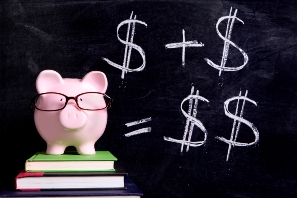How to price my book or product
by Vervante •
 Once you’re written a book, or created a new product, the next part is something a lot of people really struggle with – setting a price. It’s like a scary math problem where the answer isn’t always clear. Price it too high and no one will buy. Price it too low and you devalue your work and your profits. Finding the right price doesn’t have to feel like a guessing game, though, especially if you follow these tips.
Once you’re written a book, or created a new product, the next part is something a lot of people really struggle with – setting a price. It’s like a scary math problem where the answer isn’t always clear. Price it too high and no one will buy. Price it too low and you devalue your work and your profits. Finding the right price doesn’t have to feel like a guessing game, though, especially if you follow these tips.
#1: Research similar books or products in your niche and take note of their prices. That will give you an idea of what’s working and a price range to start with. This doesn’t mean you have to limit yourself to that range, but it’s a good starting point.
#2: Calculate your costs including printing, production, and fulfillment to get a break-even baseline. Add in extras that retail sites will charge you. If you sell from your own site, those costs will be minimal. Selling from online stores such as Amazon, however, will incur higher costs to deduct from your bottom line. If you have a certain profit margin you’d like to attain, this number will help you to set your retail price.
#3: Consider the value your book, planner or product is offering to your customer. Will they save time, money, stress? If you are delivering a lot of value to their business or life, that raises the value of your product and the price you can charge.
#4: Decide on a price that feels right to you. If you think you’re charging too little, then you’ll feel resentful and that will come through. If you think you’re charging too much, you might feel nervous, unsure or scared to put it out there.
#5: Poll your beta testers. Ask them to suggest a price range. Or run your price idea by them for their feedback. These are people who have read your book or used your program, so they have personal knowledge of the value of what you’re selling.
#6: If you’re selling from your own website, the price you set isn’t permanent. Pricing can be nerve-racking, we know, but you can always adjust. You might start out with an introductory price to test the waters and then adjust it to fit demand. Coupon codes, special packaged deals, and other similar methods can be used until you’ve got it just right.
#7: Add value to support your price: Make the price you set a no-brainer by adding so much value that your customer is excited to buy! Create packages out of your book or product to make it unique and different than anything else - and add value with extra products that add value to it.
For example, if you have a children's book, include stickers, coloring pages, crayons or colored pencils. For planners you could include extras like pens, clips, bookmarks, notepads, stickers, or even experiences like an introductory coaching session or limited-time membership in a mastermind or online program.
Adding a little something extra like this will elevate your book or product's value in your customer's eyes. Yes, there might be similar products with lower prices (that are most likely bulk-produced in China), but you have the ability with self-publishing services to create something unique, elevate your customer's experience, and make yours the choice they want.